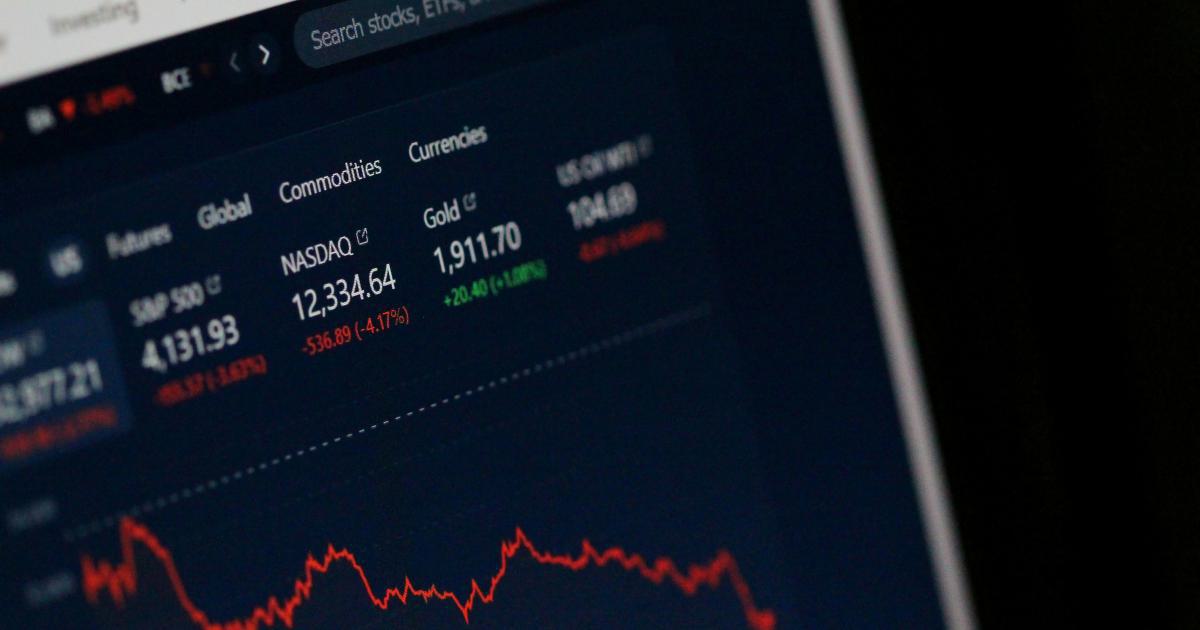The Truth About Algorithmic Trading Myths Revealed

Introduction
Algorithmic trading myths have long confused both novice and experienced market participants. In an era where computer algorithms execute trades with lightning speed, the myths surrounding these systems have grown in prevalence and persistence. Among the most discussed misconceptions is the idea that algorithmic trading myths automatically guarantee profits or that the technology is exclusively reserved for elite institutions. These beliefs can mislead investors, skew market perceptions, and ultimately affect financial decisions.
In this comprehensive article, we dissect several common misconceptions about algorithmic trading. We explain the origins of these myths, provide factual clarifications supported by research and expert opinions, and explore how critical analysis can debunk misleading claims. By understanding the realities behind these assumptions, traders and investors can better harness technology while avoiding unnecessary risks. Recognizing the nuances of algorithmic trading is essential in today’s fast-paced, tech-driven financial environment.
Trading systems, once a secretive domain, have become more accessible. However, as accessibility increases, so does the spread of half-truths and myths. Financial advisors and tech enthusiasts alike often cite exaggerated narratives about the benefits and pitfalls of algorithmic trading. This article dives deep into these myths, giving you the tools to discern fact from fiction and empowering you with a clearer understanding of what algorithmic trading truly involves.
"In the world of algorithmic trading, separating fact from fiction is paramount. Investors who understand the real mechanics of these systems are better equipped to navigate the markets." – Financial Analyst
Our journey into these myths also highlights the importance of critical thinking, rigorous research, and continuous learning. With the rapid development of financial technologies, staying informed is no longer optional; it is a necessary strategy for success.
With that in mind, let’s uncover the factual truths behind the most persistent algorithmic trading myths.
Background
Algorithmic trading, sometimes called "black-box trading," has evolved since it became popular in the 1970s. Early systems operated on basic rules and thresholds, whereas today’s algorithms incorporate machine learning, big data analytics, and high-speed networks. Despite their advanced nature, these automated systems are not immune to errors, and as a result, many erroneous beliefs have taken root among practitioners and onlookers.
The Evolution of Trading Algorithms
Historically, algorithmic trading emerged as a solution to human limitations. Whereas human traders had to rely on intuition and slower reaction times, algorithms could analyze vast amounts of data in real time and execute orders within fractions of a second. This evolution gave rise to high-frequency trading (HFT), where the sheer speed of execution has become a defining feature. Over time, however, the underpinnings of algorithmic trading were misconstrued leading to myths that persist today.
Why Myths Thrive in Finance
Several factors contribute to the proliferation of myths in algorithmic trading:
- Complexity and Ambiguity: Financial markets are inherently complex. Algorithms add another layer of abstraction, making it difficult for the average investor to grasp their true functioning.
- Media Sensationalism: Sensational headlines often oversimplify or exaggerate the capabilities of these systems. This is compounded by the human tendency to favor narratives that are dramatic and easily digestible.
- Information Asymmetry: While experts may appreciate the nuance, many retail investors receive oversimplified versions of how algorithmic trading works. As a consequence, misconceptions spread unchecked.
- Historical Precedents: Past incidents such as “flash crashes” have been attributed solely to algorithmic trading despite multifactorial causes. Such events cement stereotypes that algorithms are inherently dangerous or infallible.
Modern Adoption and Challenges
Despite these myths, algorithmic trading remains integral to global financial markets. Many institutional investors rely on highly refined algorithms to manage portfolios, hedge risks, and optimize trades. However, the adoption of such systems also brings challenges like model risk, data quality issues, and regulatory oversight. Understanding both the benefits and limitations is crucial when approaching algorithmic trading.
In today’s competitive market, algorithms are not guaranteed money-making machines, but rather tools that require careful calibration and continuous oversight. As we explore each myth in detail, it will become evident that while some assumptions have kernels of truth, most are steeped in misconception.

Myth Busting
Each myth about algorithmic trading carries its own set of misconceptions. In the following sections, we explore these myths in depth by contrasting the widespread myths with established reality.
Myth 1: Algorithmic Trading Always Leads to Profit
The Myth
There is a pervasive belief that algorithmic trading is a foolproof way to earn constant profits, leading many to believe that once an algorithm is set up, it will automatically yield positive returns regardless of market conditions.
The Reality
The truth is much more nuanced. Algorithms, regardless of their sophistication, operate based on predefined rules and historical data patterns which do not guarantee future performance. Several factors debunk this myth:
- Market Volatility and Unpredictability: No algorithm can predict sudden market events or economic shifts. Conditions such as political instability, natural disasters, or unexpected financial crises can easily disrupt market patterns.
- Technical Limitations: Algorithms rely on historical data, and while backtesting may show promising results, real-world trading involves complexities that cannot be fully simulated. Slippage, transaction costs, and latency variations often reduce the theoretical profit margins.
- Overfitting: Many algorithms are specifically fine-tuned to historical data, a process known as overfitting. Such models might perform exceptionally well in past scenarios but may fail when confronted with new market conditions.
Experts caution, "Algorithmic trading requires continuous maintenance and adaptation. A profitable strategy today might fail tomorrow if market conditions change or if the algorithm is not updated accordingly." In summary, profit is never guaranteed, and algorithmic systems must be monitored and refined regularly.
A comparative view in table form can help clarify these points:
| Factor | Myth Perspective | Reality |
|---|---|---|
| Predictability | Always profitable | Dependent on market conditions and subject to volatility |
| Data Reliability | Historical data ensures future gains | Past performance is not a guarantee of future success |
| Market Adaptability | Algorithms automatically adjust | Requires human oversight to update in changing environments |
"No algorithm can operate independently without oversight in the ever-changing markets." – Trading Technology Expert
Myth 2: Algorithmic Trading is Only for the Elite
The Myth
Some believe that algorithmic trading is a proprietary tool reserved for large financial institutions or wealthy individuals who have access to complex systems and enormous computing power.
The Reality
While it is true that early algorithmic systems were largely developed by institutional players due to their resource-intensive nature, the democratization of technology has since changed the landscape:
- Advancements in Technology: Today’s technology has become much more accessible. Cloud computing, open-source software, and affordable trading platforms have made algorithmic trading available even to individual retail investors.
- Education and Resources: There is an abundance of educational resources, online forums, and communities dedicated to algorithmic trading. These allow amateurs to learn, simulate, and even deploy simple trading strategies effectively.
- Low-Cost Tools: Numerous platforms offer algorithmic trading capabilities at a fraction of the cost that was previously required. Software libraries, coding frameworks, and broker APIs have lowered the barrier to entry for many.
However, it is crucial to note that while access to the tools is available, successful algorithmic trading still demands a high degree of market knowledge and technical expertise. The idea that it is reserved solely for the elite is outdated. Instead, it is now a field open to anyone willing to invest the time and effort to understand its complexities.
"Algorithmic trading is like learning any other skill—it requires time, practice, and patience regardless of one's starting point." – Independent Trader
Table comparison for clarity:
| Aspect | Myth Perspective | Reality |
|---|---|---|
| Accessibility | Available only to wealthy institutions | Readily available to individual traders with modern technology and education |
| Required Capital | High capital is an absolute must | While capital is important, even modest amounts can be effectively managed |
| Complexity | Only complex systems can succeed | Both simple and advanced algorithms have found success in varied market environments |
Myth 3: Algorithmic Trading is Too Unpredictable
The Myth
Another common misconception is that algorithmic trading is inherently unpredictable—an uncontrollable mix of random executions that make it too risky and uncertain for regular investors.
The Reality
The perception of unpredictability in algorithmic trading often arises from isolated incidents of market flash crashes or erroneous trades. However, there is more control and precision in algorithmic trading than the myth suggests:
- Risk Management Protocols: Modern algorithms include built-in risk management protocols such as stop-loss orders, dynamic hedging, and position sizing. These features are designed to minimize losses and adapt to changing market conditions.
- Statistical Analysis: Many algorithms employ rigorous statistical methods and real-time data analytics to assess risk and predict market trends. This analytical rigor significantly reduces the element of randomness.
- Continuous Monitoring: Contrary to the belief that algorithms run uncontrollably, they are typically monitored by teams of traders and engineers who can intervene if necessary. This layered system of oversight helps mitigate risks.
A detailed flowchart below explains how risk management is integrated into a typical algorithmic trading process:
| Step | Process in Algorithmic Trading | Outcome |
|---|---|---|
| Data Collection | Gathering real-time and historical data | Informs decision-making by identifying market patterns |
| Signal Generation | Analyzing data with statistical models | Generates trading signals based on predefined parameters |
| Execution and Monitoring | Automated order execution and real-time tracking | Risk management and dynamic adaptation to market volatility |
| Intervention | Human oversight for anomalies and failures | Safety mechanism to prevent runaway losses |
"Risk management is at the core of algorithmic trading—predictability is a matter of how well these systems are designed and maintained." – Risk Management Guru
Myth 4: Algorithmic Trading Relies Solely on High-Frequency Trading
The Myth
A prevalent myth is that algorithmic trading is synonymous with high-frequency trading (HFT). According to this belief, only rapid-fire trades executed in milliseconds fall under the umbrella of algorithmic trading.
The Reality
While high-frequency trading is a notable subset, algorithmic trading encompasses a wide range of strategies beyond just speed:
- Diverse Trading Strategies: Algorithms can be structured to implement various strategies such as trend following, statistical arbitrage, and market making. These strategies might prioritize accuracy and risk management over sheer speed.
- Time Horizons vary: Not all algorithms are designed for high-frequency execution. Some operate on longer time frames—seeking to capture medium- to long-term market trends rather than fleeting microsecond opportunities.
- Depth of Analysis: Many algorithms emphasize extensive data analysis and long-term pattern recognition rather than speed. In these cases, the algorithm acts more like a decision support system than a rapid executor.
- Regulatory Oversight: HFT is subject to stringent regulations due to its potential market impact. In contrast, other forms of algorithmic trading follow different regulatory standards and objectives. This helps diversify the trading landscape and reduces the blanket association of all algorithmic trading with HFT.
A comparison of high-frequency trading versus long-term algorithmic strategies is shown below:
| Strategy | High-Frequency Trading | Long-Term Algorithmic Trading |
|---|---|---|
| Trading Frequency | Milliseconds to microseconds | Minutes, hours, or even days |
| Data Analysis | Focus on micro-level market signals | Incorporates both micro and macro-level data |
| Regulatory Oversight | Subject to intense scrutiny | Follows broader market regulations |
"High-frequency trading is just one facet; the scope of algorithmic trading is as diverse as the market conditions they navigate." – Financial Strategy Analyst
Common Themes
After debunking these myths, a few common themes emerge that can help explain why such misconceptions persist.
- Overgeneralization: Many myths stem from a tendency to generalize complex systems into simple narratives. When a particular algorithm succeeds spectacularly—or fails dramatically—it creates a generalized story that oversimplifies a much more nuanced process.
- Lack of Transparency: The "black-box" nature of many trading systems makes them inherently opaque. This opacity fuels speculation and exaggeration about what algorithms can or cannot achieve.
- Technological Hype: Just as with any emerging technology, early excitement often gives way to inflated expectations. The promising results touted by early adopters can lead to unrealistic expectations over time.
- Media Distortion: The role of media in highlighting extreme cases, whether a massive profit or a catastrophic loss, amplifies these myths. Simplified narratives drive public opinion, often at the expense of deeper understanding.
"Deconstructing these myths is not just about setting the record straight—it’s about fostering a healthy, informed approach to technology and finance." – Market Analyst
Fact-Checking Tips
Given the complexity of market dynamics, it is crucial for investors and traders to verify any information related to algorithmic trading. Here are several strategies for fact-checking claims in this field:
Consult Multiple Sources: Always cross-reference any new claims with multiple sources of information. Reputable financial journals, academic studies, and industry reports can provide balanced perspectives.
Review Historical Data: Analyze backtesting data and historical performance records. Be wary of claims that rely exclusively on simulated scenarios without acknowledgment of real-world trading challenges.
Check for Peer-Reviewed Research: Look for evidence published in academic or peer-reviewed financial journals. Such studies undergo rigorous scrutiny and are less likely to be biased.
Engage with Experts: When in doubt, contact industry veterans or attend webinars where knowledgeable experts share their experiences and insights.
Evaluate Transparency: Consider how openly the methodology and data are shared by those making bold claims. Full disclosure of methodologies is often a sign of credibility.
Regulatory Filings: Regulatory bodies, such as the SEC or MiFID II, often publish insights and reports regarding algorithmic systems. These reports serve as reliable reference points.
Join Community Forums: Active participation in reputable trading forums can also shed light on whether certain claims hold water, as experienced traders often provide nuanced views based on practical experience.
A handy checklist can be used to assess the veracity of a claim:
| Verification Step | Action to Take | Why It Helps |
|---|---|---|
| Source Validation | Check the credibility of the source | Ensures the claim comes from an authority |
| Data Examination | Analyze the provided historical data | Distinguishes theoretical claims from practical outcomes |
| Expert Opinion | Consult industry experts or verified analysts | Gains insights based on real-world experiences |
| Cross-Referencing | Compare multiple independent sources | Minimizes reliance on any single biased perspective |
By following these guidelines, investors can avoid the pitfalls of misinformation and make more informed decisions when engaging with algorithmic trading technologies.
Conclusion
As we have seen, the world of algorithmic trading is rife with myths that obscure the truth behind these sophisticated systems. From the misguided belief that algorithms guarantee profits to the misconceptions about exclusivity and unpredictability, each myth has been debunked with evidence and clear reasoning.
The key takeaways include:
- Profit is never guaranteed: No algorithm, regardless of its sophistication, can ensure consistent returns without continuous oversight and adaptation.
- Accessibility is increasing: Technological advancements have democratized algorithmic trading, making it accessible beyond the realm of high finance.
- Risk management is crucial: Robust risk management protocols ensure that even if algorithms are not infallible, they help control losses and adapt to market changes.
- Diversity in strategies: Algorithmic trading encompasses a wide array of strategies, debunking the notion that it solely relies on high-frequency execution.
This critical analysis reinforces the notion that while algorithmic trading myths can be misleading, they also serve as entry points for deeper inquiry. By questioning these myths through rigorous fact-checking and analysis, traders can adopt a more realistic and informed approach. In the fast-paced, data-driven world of modern finance, skepticism is not just prudent—it is essential for survival.
"Embracing a skeptical and analytical mindset leads to smarter investments and a healthier market environment overall." – Industry Expert
In closing, it's imperative to challenge assumptions and actively seek accurate information. Well-informed investors not only mitigate risk but also drive the advancement of financial technology. As algorithmic trading continues to evolve, so too should our understanding, ensuring that myths do not cloud the sophisticated realities of these powerful market tools.
For anyone curious about algorithmic trading myths, remember that rigorous analysis and continuous learning remain the cornerstones of success in the financial markets. By understanding the myths and delving into the facts, you empower yourself to use technology wisely, avoid undue risks, and contribute to a more transparent and efficient trading environment.
Emphasizing transparency, robust risk management, and continuous learning in algorithmic trading not only dispels prevalent myths but also encourages smarter investment decisions. Staying informed and skeptical is key in navigating the rapidly evolving financial markets.

With the insights provided here, investors and market enthusiasts are better positioned to debunk misleading narratives and embrace the true potential of algorithmic trading. While myths may persist due to historical, technological, and media influences, the reality is that a well-implemented algorithm is just a tool—one that requires rigorous oversight, adaptive strategies, and a sound understanding of market dynamics.
As the financial ecosystem continues to integrate advanced technologies, the benefits of algorithmic trading will only increase. However, this advancement must be met with a cautious approach: continuous education, vigilant risk management, and a constant questioning of assumptions. In doing so, the field can mature beyond the simplistic narratives pushed by popular myths and evolve into a domain that truly harnesses the power of technology for balanced market growth.
Aspiring traders should view algorithmic trading as an evolving discipline—one that requires as much discipline as it does technological savvy. The myth that algorithms are magical profit generators must give way to a balanced perspective grounded in robust statistical analysis and strategic planning.
In conclusion, the journey through these discussions offers a clearer perspective on what algorithmic trading truly is, what it can offer, and the realistic challenges it presents. Armed with these insights, the next generation of traders can better utilize algorithmic strategies to navigate modern markets, all while debunking the myths that once held them back.
Invest wisely, continuously challenge your assumptions, and let knowledge be the compass that guides your trading endeavors into a future where facts triumph over myth.

Unlock Trading Potential with Automated Analysis
Tired of missing opportunities and making suboptimal trading decisions? TrendSpider's cutting-edge platform automates complex technical analysis, saving you time and reducing human error.
With multi-timeframe analysis, dynamic alerts, backtesting, and customizable charting, you'll gain a competitive edge in identifying trends and making informed trades across global markets.
Unleash the Power of Automated Trading Analysis
Are you struggling to keep up with the fast-paced trading world? TrendSpider empowers you with cutting-edge tools for optimal strategy execution.
Our automated technical analysis suite eliminates guesswork, backtests strategies, and delivers real-time alerts, saving you valuable time and effort.


